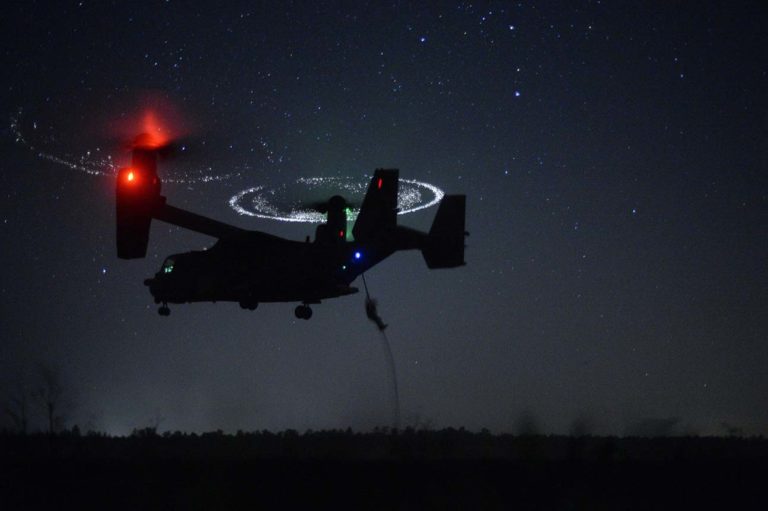Reflections: The Relationship between Special Forces and General Forces
Reflections Series

I was on the staff of the Senate Armed Services Committee (SASC) when the Congress created Program 11 and the Special Operations Command. That legislation was championed by Senator Bill Cohen who subsequently became secretary of defense (and elevated me to become his deputy). It is worthy to reflect on these developments and think about where we are today.
The push to create a separate structure for Special Forces was spurred by early experiences with terrorism. The committee was generally familiar with special capabilities that were created in the 1980s and 1990s to deal with unique terrorist incidents. I remember one incident that riveted the attention of the committee, and that was a real-world episode when a commercial aircraft in Europe was hijacked by terrorists. At that time we struggled to build a counterterrorism capability that could rapidly be deployed to address the ongoing episode. The Army had a Special Forces capability that could be helpful, but we lacked the overall organizational structure to make timely decisions and timely use of these resources.
The Special Forces community sensed an opportunity. There was a broad-based concern about unique counterterrorism capabilities, but the Special Forces community saw this as an opportunity to boost its standing within the Defense Department. Most members of the SASC thought they were voting to create a unique counterterrorism capability, while the Special Forces community saw it as an opportunity to establish a unique and stronger identity within the department, almost a fifth military service.
The push to create a separate structure for Special Forces was spurred by early experiences with terrorism.
The second event riveting the attention of the committee was the highly successful Israeli rescue in Entebbe. An Israeli aircraft was diverted by terrorists to Uganda. Israel quickly and effectively mobilized a Special Forces detail that flew into Entebbe and rescued the Israeli hostage.
This was the central dynamic that created Special Operations Command (SOCOM) and Special Operations/Low-Intensity Conflict (SOLIC). America’s conventional forces failed in a special mission and Israel succeeded. I remember listening to our committee members comment on what it meant for America to fail in the field and to watch Israel succeed. It wasn’t envy. It was a realization that success in small surgical actions communicated a much larger message about competence of a national power. America was a much more powerful military, but when it failed in a Special Forces action, it communicated weakness. Israel communicated a superb competence about its overall military might when it succeeded in Entebbe.
The point of this reflection is to examine the relationship between Special Forces and general forces.
The point of this reflection is to examine the relationship between Special Forces and general forces. President John Kennedy created the famous “Green Berets.” It was an organizational response to deal with situations that required force, but short of the massive muscle movement of military deployments. But this relationship has always been uneasy.

Special Forces are unique capabilities of military establishments. I visited these units and was (and am) in awe of their abilities. I remember once flying to a Special Forces operational location on a military flight. I was used to well-cut stewards on military flights providing me courteous service, with breakfast on the morning flight. The pilot announced we should prepare for landing. What I didn’t know was the enlisted “service” personnel were quietly parachuting out of the aircraft, landing on the airfield where we were destined. I was shocked to walk out of the aircraft and shake hands with the welcoming party, only to find “stewards” on the flight who were standing at smart attention on the tarmac to greet me. These Special Forces personnel and units are remarkable.
We need special tools like Special Forces, but we need to know they operate under positive control.
So what is the proper relationship of Special Forces to the National Command Authority (which is a high-faluting expression for the president and the secretary of defense)? The country actually has two sets of special, highly skilled surgical combat teams, one controlled by the Department of Defense (under Title 10 of the U.S. Code) and one controlled by the Intelligence Community (under Title 50). My comments here concern the Title 10 Special Forces.
We need special tools like Special Forces, but we need to know they operate under positive control. During the past 10 years, these forces have taken on a new and much larger role. We undertake operations every day to find and neutralize (i.e., capture or kill) hostile individuals. Armed drones fly every day trying to strike key leadership elements in terrorist organizations.
But covert military operations have an exceptional dimension in our national arsenal of response. Special missions carry the momentum of national will without the conviction of national purpose. We eliminate genuinely hostile elements, but the American people are not engaged. The president undertakes crucial missions involving lethal force but without a broad sentiment of support by the American people.
…the next president should initiate a process early on that would provide for a meaningful debate on how we will wage that war and with what transparency.
We created a structure to undertake covert special activities for a good reason. It has revalidated a global perception of our competence. But it also has decoupled our national commitment from our national military actions. President Obama inherited a war. The next president will inherit war too. But the next president should initiate a process early on that would provide for a meaningful debate on how we will wage that war and with what transparency.
